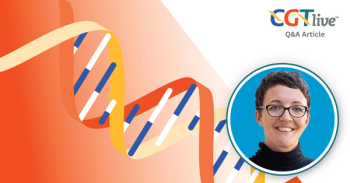
Developments in Immunotherapy at PCOC®: The Living Drugs
David L. Porter, MD, kicked off the 5th annual Patient-Centered Oncology Care® (PCOC®) meeting in Baltimore on November 17, 2016, with an update on chimeric antigen receptor T-cell therapy.
IMMUNOTHERAPY AGENTS THAT TARGET
specific proteins in the immune response pathways have enraptured providers of cancer care. Monoclonal antibodies, including PD-1 inhibitors nivolumab and pembrolizumab, and the PD-L1 inhibitor atezolizumab, have improved outcomes in a variety of cancer types (both solid and liquid) and are also being evaluated—alone and as combination therapies—in many more.
Another exciting field in immunotherapy is of chimeric antigen receptor (CAR)-T cells. To provide an overview of this evolving field, The American Journal of Managed Care® invited David L. Porter, MD, director, Bone Marrow Transplantation; Jodi Fisher Horowitz, professor in Leukemia Care Excellence, University of Pennsylvania (U-Penn) Health System, Philadelphia. Porter kicked off the 5th annual Patient-Centered Oncology Care® (PCOC®) meeting in Baltimore on November 17, 2016, with an update on CAR T-cell therapy.
The CAR-T cells have a dual purpose, Porter explained. They are modified to recognize and bind a specific protein on the surface of cancer cells, and to improve the binding of the T cell to the cancer cell surface. Additionally, there are signals that promote T-cell activation, growth, and survival, which is achieved via transfecting a lentiviral vector into the T cells.
“At U-Penn, we have treated about 340 patients with CAR-T cells,” Porter said. This includes:
- 62 adults with chronic lymphocytic leukemia (CLL)
- 153 children and adults with acute lymphoblastic leukemia (ALL)
- 39 adults with non-Hodgkin leukemia
- 12 adults with multiple myeloma
- 74 adults with other cancer types
Porter explained that, CLL, which is thought of as a slow growing cancer, “can be aggressive and life threatening and result in the accumulation of malignant B cells.” With a median survival time between 2 and 20 years, patients with relapsed/refractory CLL have poor prognosis and are in need for more potent therapies, he said. Although allogenic bone marrow transplant or allogenic stem cell transplant (ASCT) is an option, it is a very risky procedure and many patients are ineligible due to their age, advanced disease stage, or comorbidities. Porter stated that these challenges make it vital to develop newer options for patients with CLL.
Porter then explained the specific steps involved in the treatment process:
• Cell collection. T cells are collected from the patient by a process called “apheresis,” where blood is drawn from the patient, one or more blood components are removed, and the remaining blood is then returned to the body.
• In vitro manipulation. T cells are reengineered, by transfection with a lentiviral vector, to produce CARs on their surface. The T cells are now called CAR-T cells.
• Expansion. The reengineered cells are then “expanded” by allowing them to multiply in the laboratory. “T cells can expand between a 1000- and 10,000-fold…they are living drugs,” Porter said.
Table 1
• Infusion. Majority of patients are treated with a chemotherapy agent before they are infused with the reengineered CAR-T cells. Porter shared results from a trial evaluating CTL109 treatment, which is a CAR-T treatment being developed by Novartis, in CLL ().
“One of the 43 patients who participated in the trial achieved complete remission and had no measurable evidence of leukemia by day 31,” Porter said. By summer of this year, the patient remained in remission, 6 years following infusion with CTL109.
Another category of patients with poor outcomes is those with relapsed/refractory ALL. With a median survival less than 1 year and a 3-year survival less than 25%, these patients do not respond well to ASCT, making them an ideal recipient for CAR treatment.
Porter went on to show results from multiple ALL trials that are ongoing at different sites within the United States (Table 2).
Toxicity
The treatment does not result in much infusional toxicity, “But the treatment results in hepatotoxicity and renal toxicity, which is reversible and associated with hypotension,” Porter said. While tumor lysis syndrome is common, it can be managed; however, cytokine release syndrome, or CRS, is the most serious toxicity associated with CAR-T treatment. Almost all patients who respond to treatment develop CRS 1 to 14 days after infusion with the modified T cells.
CRS, Porter said, is characterized by high fever, myalgias, nausea, fatigue, anorexia, hypoxia, and hypotension. Patients who respond to CAR-T treatment present with a significant spike in IL-6, modest spike in IFN-g and TNF-a, and a mild increase in IL2. Currently, tocilizumab, an IL-6 receptor antagonist, is administered between days 2 to 18 to rapidly reverse CRS. “However, the question is when do we start treatment without affecting the efficacy of CAR-T treatment?” Porter said.
Porter ended his talk saying, “CAR-T—cell therapy is here to stay with trials expanding to other B cell malignancies and solid tumors.”
Newsletter
Stay at the forefront of cutting-edge science with CGT—your direct line to expert insights, breakthrough data, and real-time coverage of the latest advancements in cell and gene therapy.

























